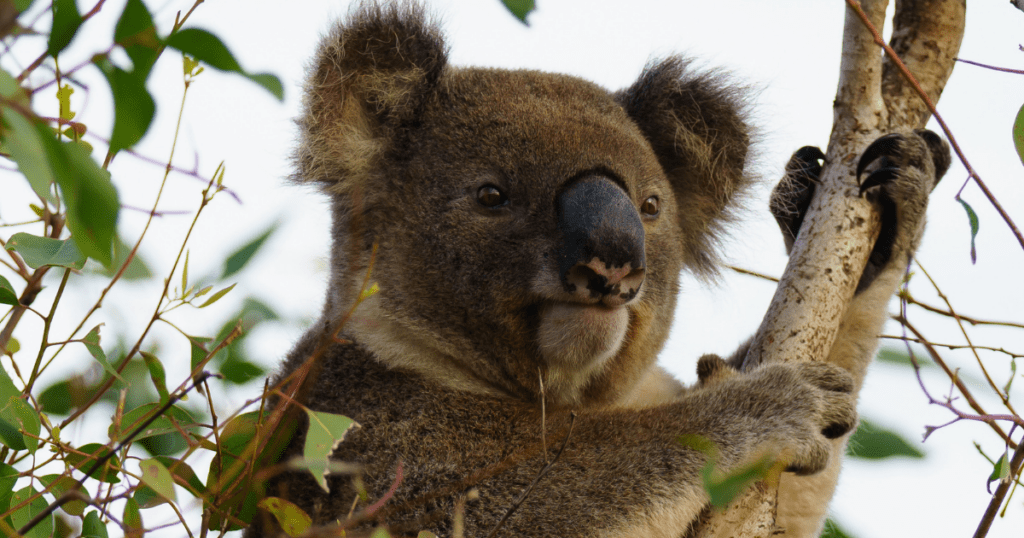Why rescuing the climate and biodiversity go hand-in-hand…
In early October, the Australian Government released the Threatened Species Action Plan that maps a pathway to protect, manage and restore Australia’s threatened species and important natural places. The Action Plan for 2022-2032 builds on the Action Plan for 2021-2026, which was developed with input from experts, the community, natural resource management, scientists, conservation groups, and First Nations peoples.
The 10 year objectives listed in the report include:
- The risk of extinction is reduced for all priority species
- The condition is improved for all priority places
- New extinctions of plants and animals are prevented
- At least 30% of Australia’s land mass is protected and conserved
The 10-year objectives, five-year targets, and key actions set out in this Action Plan provide a focus for improving the trajectories of 110 priority species and 20 priority places. The plan notes that all threatened species and natural environments are important, focusing on a limited number of priority species and priority places to help target effort and resources so that tangible outcomes can be achieved, measured, and shared.
The plan is indeed a start but reports suggest that it still falls short:
- Funding is wholly inadequate. The $225 million committed is nowhere near enough, with researchers advising the actual figure sits at $1.69 billion.
- picking winners means many species will lose. The plan is focused on the decline of 110 species and 20 places. However, combined, we have more than 2,000 species listed as threatened.
- The plan assumes recovering priority species may help conserve other threatened species in the same areas and habitats. This is questionable given only around 6% of listed threatened species are slated to receive priority funding and how much the needs of different species can vary even in the same habitats and ecosystems.
(For more information please refer to the article by The Conversation)
At Carbon Positive Australia, we know first-hand that conservation costs money and recovering threatened species takes effort. We also recognise the funding allocated to this Action Plan may not nearly be enough. Still, it is a start, and this is where we recognise the role we have to play as an organisation and the part we all have to play in protecting our threatened species.
We know that our carbon planting can and does protect species.
We know this because our Citizen Science projects undertaken with CCWA and other organisations provide us with this valuable data.
Over the years, our projects have been integral in protecting and providing critical habitat for threatened species. Of the 110 priority species noted this includes:
- Carnaby’s Cockatoo (Zanda latirostris) at our Tootanellup, WA project on Minang Noongar Country. In 2021 this site was planted with a biodiverse species mix designed to replicate the surrounding Marri woodland. Marri (Corymbia calophylla) is not only a high-carbon species but provides an important food source for the Carnaby’s Cockatoo.
- Koala (QLD, NSW, ACT) (Phascolarctos cinereus) at our Nimbin, NSW project on Widjabul Country saw 69.500 seedlings planted in May by our contractor Future Forests. A total of 104 diverse species of local native trees and shrubs were hand planted by the team, and survival rates thus far are excellent. Canopy cover should be reached within 3 to 5 years, providing habitat and connectivity for native fauna that not only includes koalas but wallabies, land mullets and an array of native birds.
- Malleefowl (Leipoa ocellata) at our upcoming Warralakin, WA project on Kalaamaya Country scheduled for 2023. Previously cleared and used for cropping, the planting site is located within a biodiversity hotspot and is home to several threatened flora and fauna species. This project will aim to restore native vegetation to the area, creating habitat to support a range of woodland species, including Dunnarts, Western Yellow Robins, Brushtail Possums, and Pink Cockatoos.


For more information on the projects that have played a significant role in protecting threatened species beyond the 100 listed by the Australian Government, please read our blog on ‘Biodiversity Breakdowns and Breakthroughs’.
Capturing carbon and restoring biodiversity goes hand-in-hand and addresses the connected catastrophes of our time – the climate emergency and the ecological emergency. What we choose to do today can have a significant impact for tomorrow for all threatened species, not just those that have made the list.
For more information on the threatened species action plan head to the Department of Climate Change, Energy, the Environment and Water.
If you would like to make a donation to support our native wildlife you can do so here.
